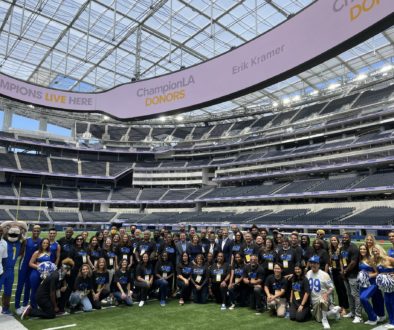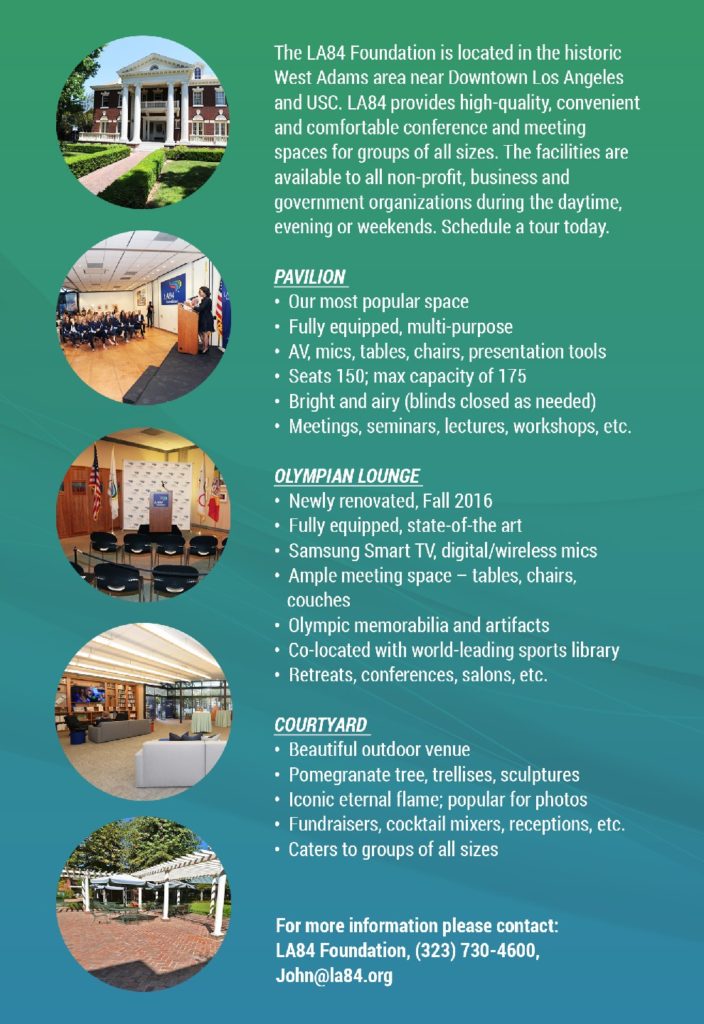2017 LA84 Summit Recap – Bridging the Divide: Corporate Brands Impacting Youth Sports and Play
By Shirley Ito
Panelists
Kathleen Tullie, Senior Director of Corporate Social Responsibility, Reebok International
Ryan Eckel, Vice President – Brand, Dick’s Sporting Goods and Co-Executive Director, Dick’s Sporting Goods Foundation
Caitlin Morris, GM, Global Community Impact, Nike
Heather Lazarus, Executive Director, Mattel Children’s Foundation; Director, Corporate Affairs and Philanthropy Mattel Inc.
Moderator: Eric Reed, Vice President – Entertainment & Tech Policy, Verizon
The panelists represented well-known brands and companies in the sports industry, and agreed that opportunities for children’s participation in youth sports are becoming increasing difficult due to a multitude of socio-economic issues. Each panelist described how their company aligns itself with youth sports, and shared their initiatives that engage people in youth sports issues and needs. Additionally, each panelist added their insight on the problems that prevent children from participating and offered ongoing and potential solutions.
READ MORE: LA84, 400+ Attendees Celebrate Play For All Movement At 2017 LA84 Foundation Summit
Eckel: Dick’s Sporting Goods began the Sports Matter program in 2014 after a study reported the dramatic reverse in funding of youth sports. “Dick’s became aware that $3.5 billion has been cut from youth sports funding in the previous three years,” Eckel said. By communicating and educating, Dick’s attempts to engage customers in the fact that youth sports funding is declining or out of reach for many. “We are driven by the fact that we believe sports is the best youth development tool that exist,” Eckel said. “If you have [dollars] to invest and you are interested in positive outcomes for kids, the best place to invest is sports. We believe that statistics would bear that out.”
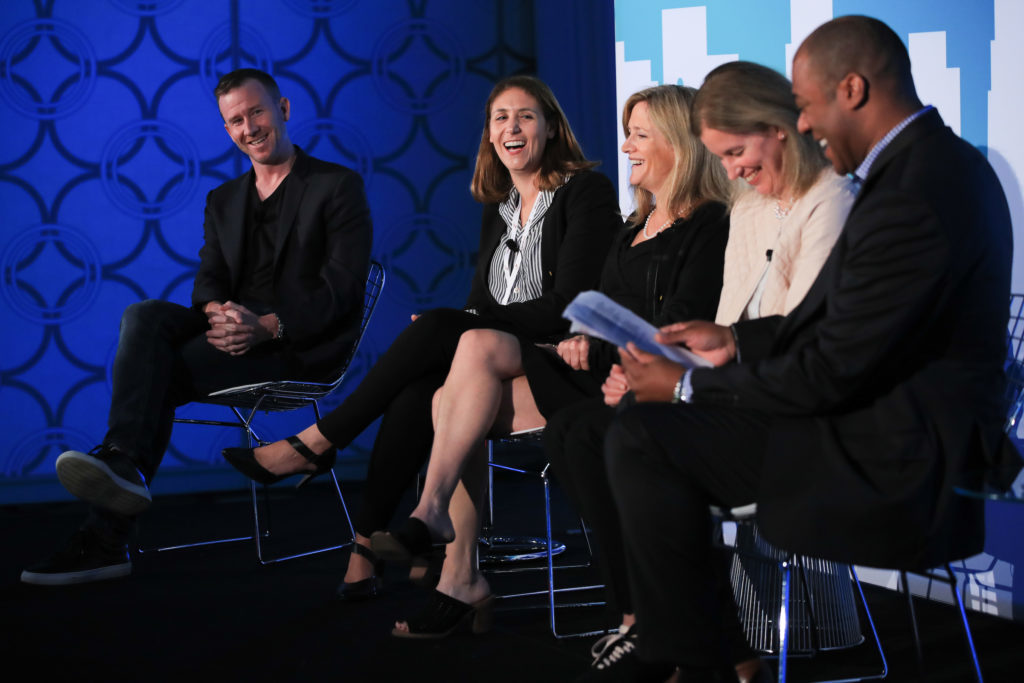
Lazarus: Mattel’s Children’s Foundation is to mobilize the company’s employee base to volunteer with the Special Olympics. The foundation’s overall role is to encourage worldwide access to play, while emphasizing the link between sports and cognitive, physical and socio-economical development. “We believe in the responsibility at Mattel to create today’s children into tomorrow’s future leaders,” Lazarus said.
Tullie: For Reebok, there is a raised importance in creating a “culture of participants” rather than supporting an audience of spectators and fans. BOKS, or Build Our Kids Success, gives youth a starting point for activity, such as before school. BOKS helps instill exercise as part of the daily routine before class begins, and focuses on both ‘free play’ and structured physical activities. “Reebok feels they are a part of the [inactivity] problem, and now need to be part of the solution by providing access to kids and women,” Tullie said.
Morris: At Nike, a focus is on the importance of ‘play’ versus sport. “For children, Nike believes that all kids love to move, but not all are given the opportunity to learn the basics of movement,” Morris said.
“If you don’t really learn how to play, at some point, the language of the playground switches from play to sport and you simply stop playing.”
Morris also noted the Nike Community Ambassador Program, which, similar to Mattel, engages company employees to volunteer in their community. Nike trains participating employees on the fundamentals of youth sports coaching.
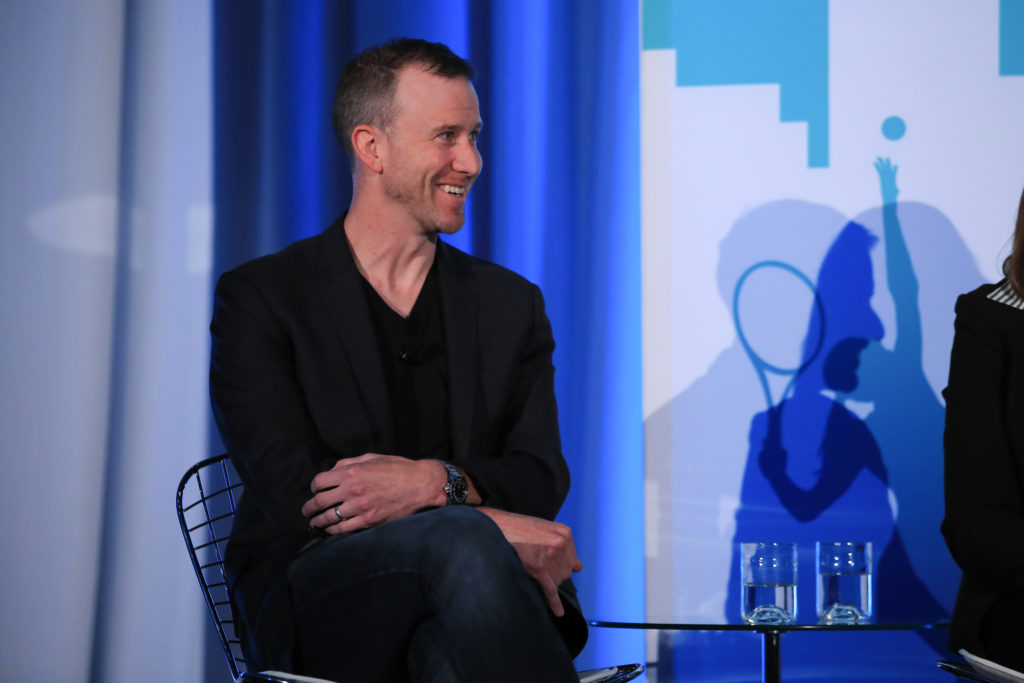
The Haves and Have-Nots
Morris added a valuable insight into why youth sports participation has dropped in recent years. “It’s not just one thing,” she said. “Locked out means they don’t get the skills to move forward. Dropped out, they had a bad experience with a coach, or Priced out. We’ve stripped opportunities for movement in the school and also stripped out opportunity to play in our communities.”
READ MORE: 2017 LA84 Summit Recap – The Data: The Power Of School-Based Sports
Main Problems in Youth Sports
- Finding the space for play
- Coupled with technology, we’ve moved ourselves out of movement
- The problem is multi-faceted
- The play or sport experience may be a negative one that turns kids off
- Reduction of sports or PE in school increases the play equity gap
- Specialization and elite sports also accelerates this play equity gap
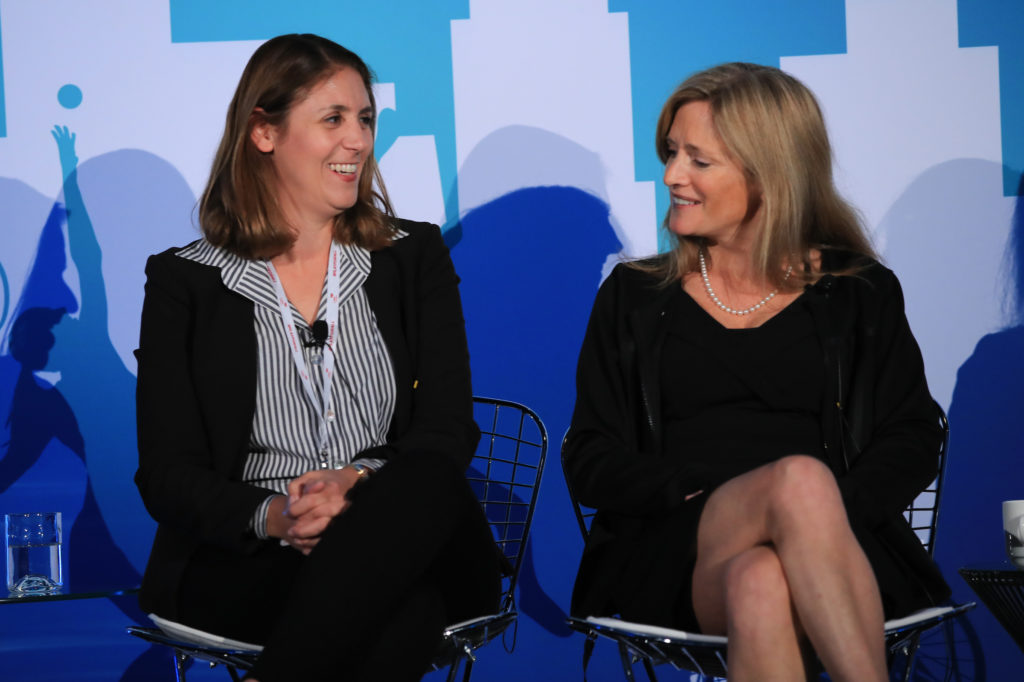
Solutions in Youth Sports
- Schools are a solution to closing the gap, as programs like LAUSD’s Beyond The Bell take care of one-half of the problem of transporting your kid to the school for practice
- Get kids introduced to play early. They can move from play to organized “play” or sport
- Despite hurdles, kids do respond to technology in sports. Technology can tap into the best tools for sharing and remembering positive sport experiences
- If we can make the argument the right way, we can give principals and superintendents the tools to advocate for dollars and equipment for sports. Sports has to compete with other disciplines such as arts and ‘traditional’ subjects such as math and literature by being able to show the benefits it provides
- Positive parental engagement
